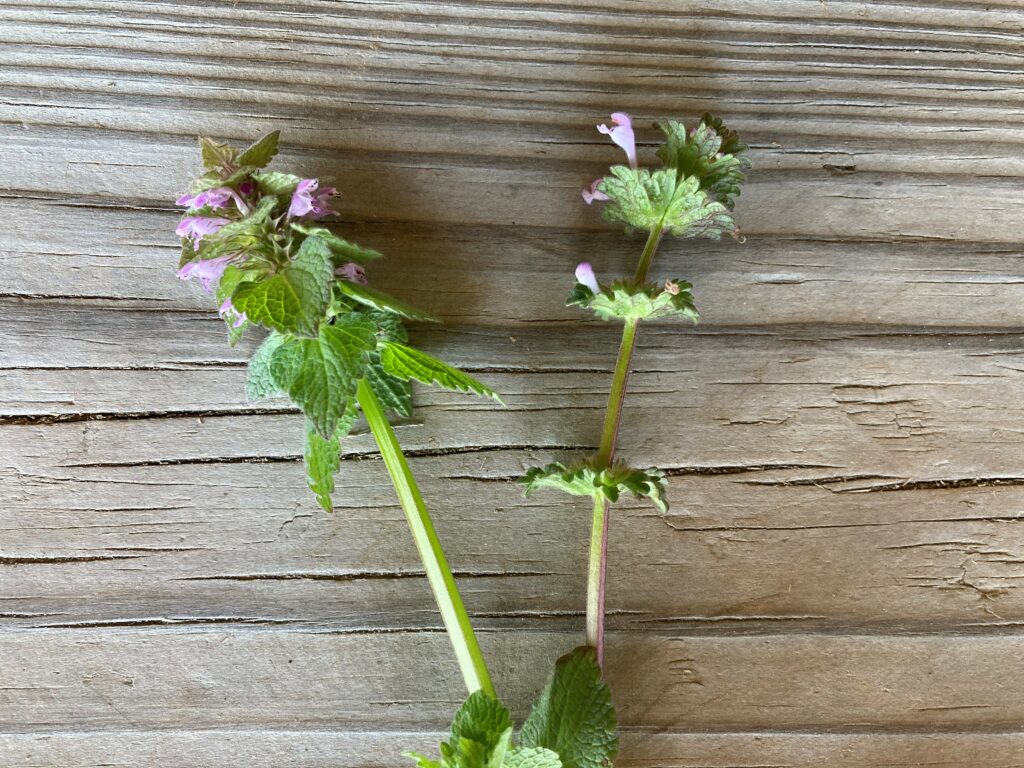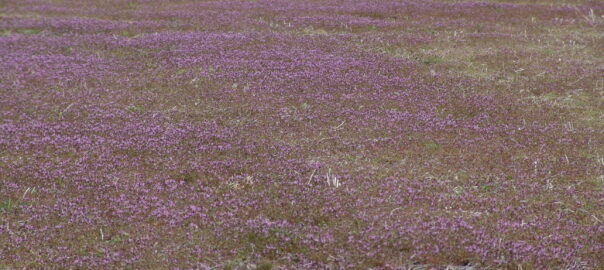Tennessee fields annually turn a purple color around April 1. The weed henbit (Lamium amplexicaule L.) is the main cause for this color. It has distinct purple flowers and is one of the most commonly found plants in our row crop fields. However, there is a close cousin to henbit, purple deadnettle (Lamium purpureum L.), that is also adding to the purple color in many fields.
These two Lamium species are often confused as being the same weed. They are both part of the Lamiaceae or “mint” family. One distinguishing characteristic of plants in this family including henbit and purple deadnettle is that they have square stems.
The two can be distinguished from each other by their distinctive leaf shape (Picture attached). Henbit leaves consist of a rosette arrangement around the stem and are more circular while purple deadnettle has distinctive “heart shaped” leaves.
Both species can be controlled fairly readily with many herbicides including glyphosate + dicamba or 2,4-D prior to flower. However, once they flower they become much harder to control with those systemic herbicides. Typically, contact type herbicides like paraquat, atrazine + oil, etc. will provide better control once they have gone reproductive.



